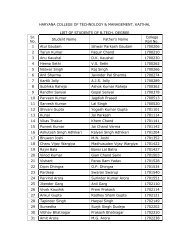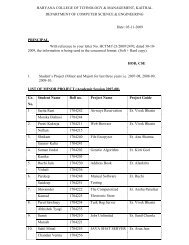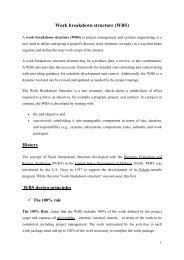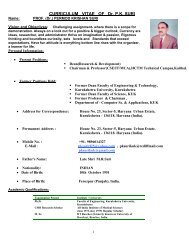You also want an ePaper? Increase the reach of your titles
YUMPU automatically turns print PDFs into web optimized ePapers that Google loves.
LECTURE NOTES OF ADVANCED DATA STRUCTURE (MT-CSE 110)<br />
A graph G is called planar if it's vertices can be identified with points in the<br />
plane, it's edges with arcs joining the corresponding points so that no edges<br />
cross each other.<br />
By a coloring of the vertices of a graph we mean an assignment of colors<br />
(numbers) to the vertices so that if two vertices are connected by an edge, they<br />
are assigned distinct colors.<br />
A graph G is called bipartite if it's vertices can be colored by 2 colors.<br />
A labeling of a graph is an assignment of distinct labels (symbols) to it's vertices.<br />
Two graphs G and G' are isomorphic if it possible to label the vertices of G and<br />
G' by the same set of labels (i.e. by the integers 1,...,n) so that two vertices are<br />
connected by an edge in G if and only if they are connected by an edge in G'.<br />
A network is a weighted digraph with two distinguished vertices, S (source) and<br />
T (terminal, sink) such that all edges incident with S are directed away from S<br />
and all edges incident with T are directed towards T.<br />
The degree (valence) of a vertex a in a graph G is the number of distinct edges<br />
(a,x) in G.<br />
The Indegree of a vertex v in a DiGraph is |{(x,v) | (x,v) ∈ E(G)}|<br />
The Outdegree of a vertex x in a DiGraph is |{(x,v) | (x,v) ∈ E(G)}|<br />
REPRESENTATION of GRAPHS<br />
There are various ways to represent graphs, each has it's advantages and<br />
disadvantages. We will discuss 3 common ways to represent graphs.<br />
[1] Visual representation. Draw points in the plane, each point corresponding to<br />
a vertex of the graph. Connect two points by an arc if the corresponding vertices<br />
are connected by an edge (use arrows if the graph is a digraph).This<br />
representation is simple and straight forward. It is useful to visualize some<br />
properties of graphs. It is obviously limited to graphs of relatively small size.<br />
Prepared By :<br />
Er. Harvinder Singh<br />
Assist Prof., CSE, H.C.T.M (Kaithal) Page ‐ 75 ‐







